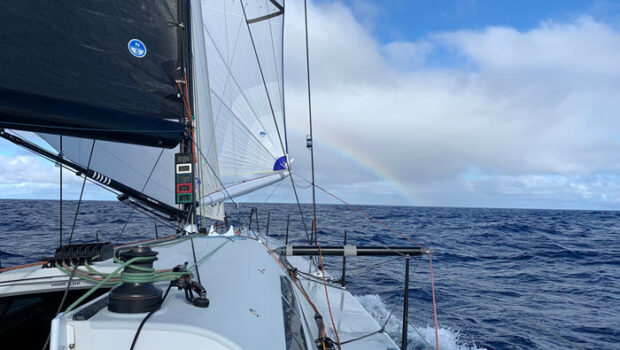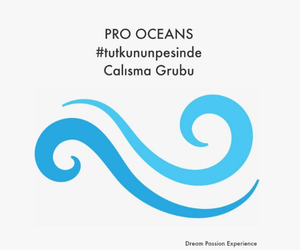A trend for the biennial Transpac Race is for there to be entrants that can’t get to the start line due to insufficient insurance. The risk, apparently, is too risky for the insurance industry.
“This race is not for the faint of heart, nor apparently, for the faint of underwriting,” noted Chip Merlin, owner of the Bill Lee 68 Merlin. “Let’s just say that if I had asked for insurance for a Mars mission instead, I might have received better quotes with more coverage.
“Most fellow skippers I spoke to couldn’t get full coverage at all, and those who did paid dearly for it. I was only able to get partial coverage for Merlin. That’s a nerve-wracking proposition when you’re launching a valuable vessel thousands of miles into the blue with no AAA on speed dial.
“We often take for granted how critical insurance is. Insurance is not just for races, but for life. Insurance allows us to finance our dreams, protect our assets, launch businesses, and yes, sail fast boats across wild oceans.
“Without it, many of us wouldn’t have the courage or capital to even attempt the extraordinary. It’s the invisible financial backbone of adventure and enterprise. Some who wanted to sail this race did not do so because insurance has become hard to find and afford for the Transpac.
“The race was thrilling. The crew was outstanding. The ocean was humbling. However, this race reminded me of how thin the line is between adventure and adversity, and how vital insurance is to both.
“If the insurance industry wants to inspire more boldness, more dreams, more people building homes, starting businesses, or sailing to Hawaii, it must show up for them. Not just in underwriting meetings, but when the skies turn dark after losses happen and communities need insurance to rebuild.”
David Osler, Law & marine insurance editor for Lloyd’s List, offers this broader view:
Lloyd’s of London prides itself on readiness to insure just about anything, from late Liverpudlian comedian Ken Dodd’s trademark buck teeth to Bruce Springsteen’s vocal cords. I know of only two recent cases where underwriters have refused point blank to touch a risk.
In 2012, a Hollywood studio was unable to buy cover for non-completion of a Charlie Sheen movie, thanks to the moral hazard represented by the actor’s documented propensity to inject himself with cocaine. Sheen, it should be stressed, has now been clean for seven years.
And a couple of months back, Travelers’ Lloyd’s syndicate would not write Red Sea war risk on the final voyage of Eternity C, despite holding the bulk carrier’s annual placement.
That turned out to be the correct decision, at least from Travelers’ point of view. Owner Cosmoship ordered the vessel to make the trip anyway and it came under attack from Houthis, the rebel militia in Yemen. At least four seafarers died and a further 10 are now being held captive, while the vessel was a total loss.
The point is that war risk insurance is a for-profit class and Red Sea war risk insurance is the ultimate fly by the seat of your pants proposition right now.
Yes, more than 99.9% of ships undertaking these voyages will make it through okay. But for the minority that don’t, the payouts can often be huge.
Seen in that light, current additional premiums of 0.3%-0.6% for Red Sea transits — representing an outlay of $150,000-$300,000 for a vessel worth $50m — would strike most people as a reasonable deal.
Remember that many owners will not even be paying that much, as they qualify for no-claims bonuses and/or fleet discounts. Even those that do have to stump up will commonly be able to claim the money back from the charterers.
All of this brings me to my big story today, based on comments over the weekend from Suez Canal Authority chair Admiral Osama Rabie, at an event held last weekend to mark the anniversary of Egypt’s 1956 nationalisation of the key international waterway.
Rabie highlighted a sharp decline in traffic since the onset of the Houthis campaign against merchant tonnage. Transits are down by more than half, from 70-80 a day to 30-35.
That vindicates the findings of my colleague Bridget Diakun earlier this month, who reached similar figures on the back of Lloyd’s List Intelligence data.
Suez revenues have plunged from over $10bn a year to less than $4bn. Given the canal’s importance to Egypt as a source of hard currency earnings, that is going to hurt the country.
Rabie urged marine insurers to reduce what he described as “elevated” premiums in the hope of encouraging more shipowners to resume transits.
The obvious counter is that rates are not in fact elevated. Far from it.
The second point, perfectly put by one source I quoted, is that marine insurers are not the underlying cause of the canal’s woes. That’s the Houthis.
Whether the risk in question is the Houthis’ malign designs on the world fleet or a film star’s drug addiction, underwriters have every right to price it at a level that makes commercial sense.
Alternatively, to use a maxim Sheen would have done well to adopt, they can just say ‘no’. My guess is that the Suez Canal Authority would like that outcome even less.
SCUTTLEBUTT News Link !
DemirHindiSG 07 Ağustos 2025-19:01





